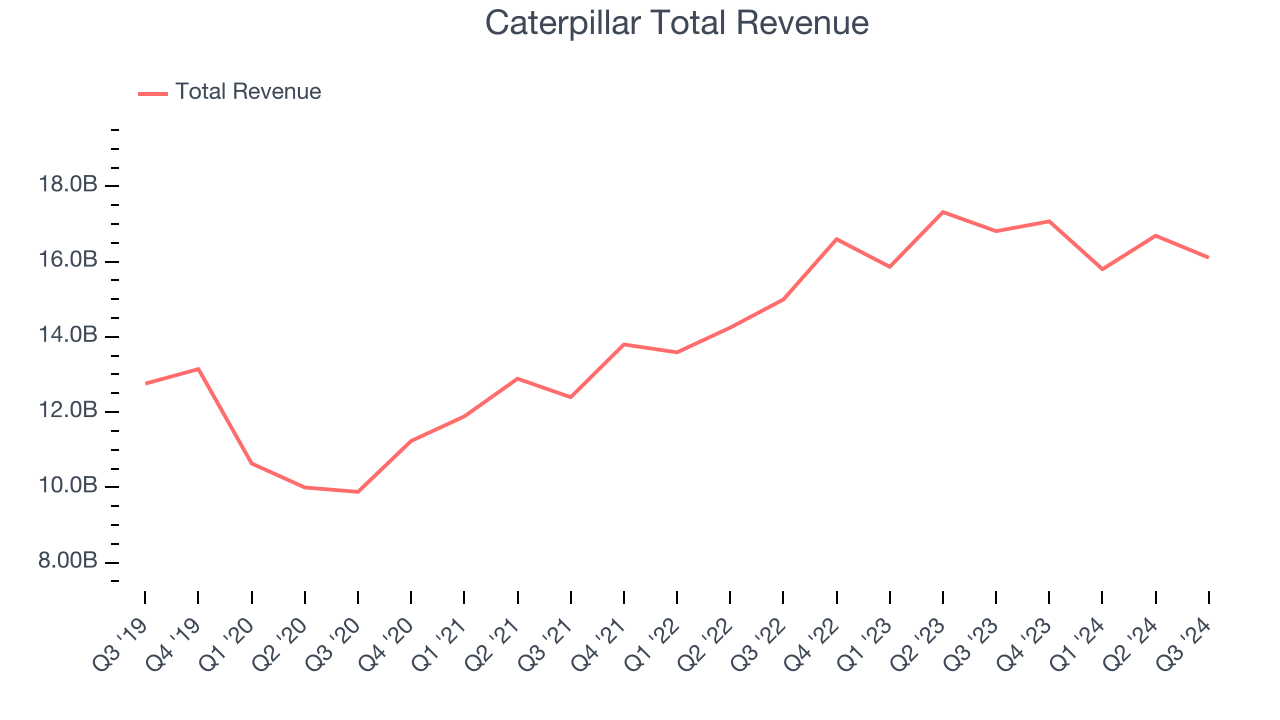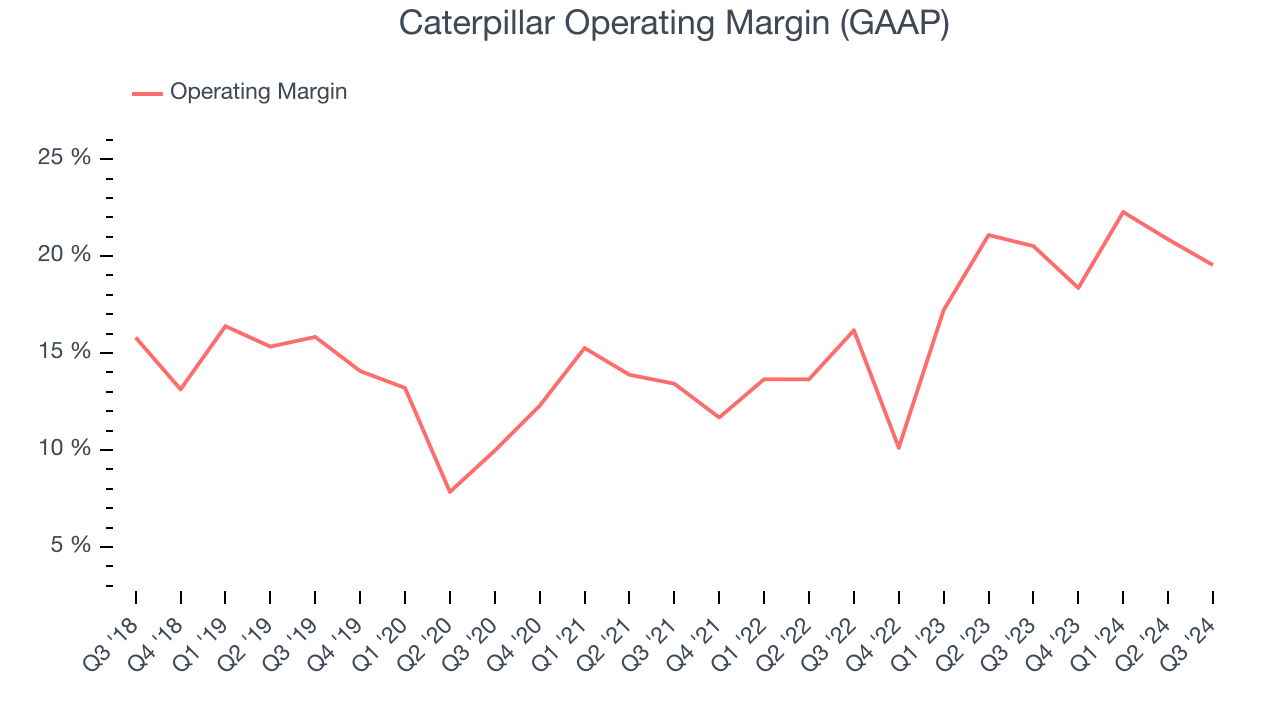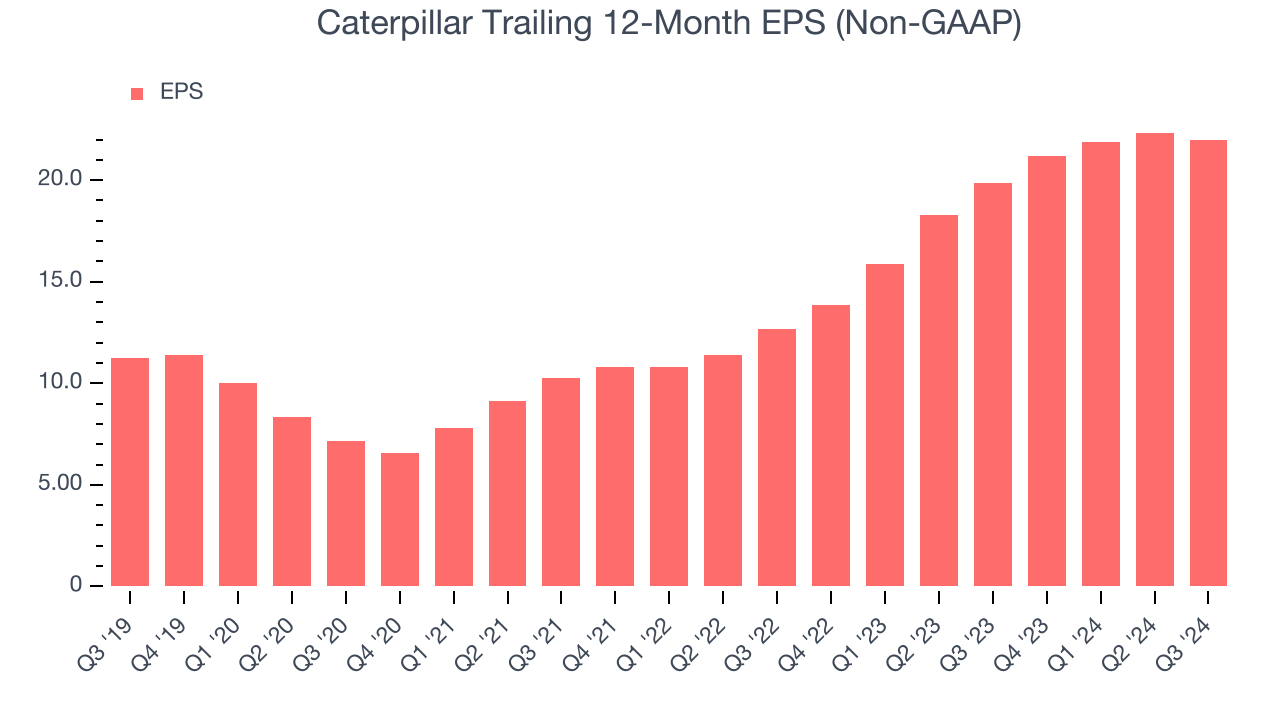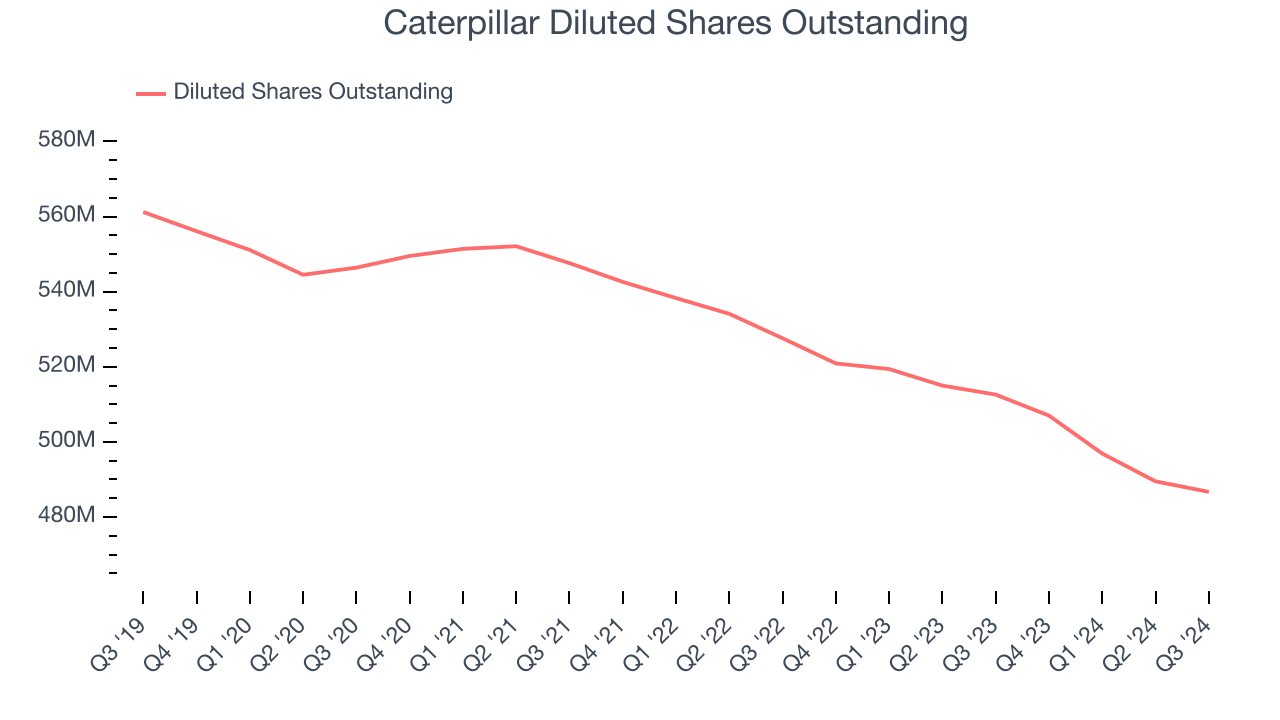
Construction equipment company Caterpillar (NYSE:CAT) met Wall Street’s revenue expectations in Q3 CY2024, but sales fell 4.2% year on year to $16.11 billion. Its non-GAAP profit of $5.17 per share was 3.4% below analysts’ consensus estimates.
Is now the time to buy Caterpillar? Find out by accessing our full research report, it’s free.
Caterpillar (CAT) Q3 CY2024 Highlights:
- Revenue: $16.11 billion vs analyst estimates of $16.24 billion (in line)
- Adjusted EPS: $5.17 vs analyst expectations of $5.35 (3.4% miss)
- EBITDA: $3.69 billion vs analyst estimates of $3.83 billion (3.6% miss)
- Gross Margin (GAAP): 37.5%, up from 32.2% in the same quarter last year
- Operating Margin: 19.5%, in line with the same quarter last year
- EBITDA Margin: 22.9%, in line with the same quarter last year
- Free Cash Flow Margin: 23.2%, up from 21% in the same quarter last year
- Market Capitalization: $187.9 billion
"I'd like to thank our global team for delivering strong adjusted operating profit margin and adjusted profit per share while generating robust ME&T free cash flow," said Chairman and CEO Jim Umpleby.
Company Overview
With its iconic yellow machinery working on construction sites, Caterpillar (NYSE:CAT) manufactures construction equipment like bulldozers, excavators, and parts and maintenance services.
Construction Machinery
Automation that increases efficiencies and connected equipment that collects analyzable data have been trending, creating new sales opportunities for construction machinery companies. On the other hand, construction machinery companies are at the whim of economic cycles. Interest rates, for example, can greatly impact the commercial and residential construction that drives demand for these companies’ offerings.
Sales Growth
Reviewing a company’s long-term performance can reveal insights into its business quality. Any business can have short-term success, but a top-tier one sustains growth for years. Regrettably, Caterpillar’s sales grew at a sluggish 3.6% compounded annual growth rate over the last five years. This shows it failed to expand in any major way, a rough starting point for our analysis.

Long-term growth is the most important, but within industrials, a half-decade historical view may miss new industry trends or demand cycles. Caterpillar’s annualized revenue growth of 7.7% over the last two years is above its five-year trend, suggesting some bright spots. 
This quarter, Caterpillar reported a rather uninspiring 4.2% year-on-year revenue decline to $16.11 billion of revenue, in line with Wall Street’s estimates.
Looking ahead, sell-side analysts expect revenue to remain flat over the next 12 months, a deceleration versus the last two years. This projection is underwhelming and shows the market thinks its products and services will see some demand headwinds. At least the company is tracking well in other measures of financial health.
Unless you’ve been living under a rock, it should be obvious by now that generative AI is going to have a huge impact on how large corporations do business. While Nvidia and AMD are trading close to all-time highs, we prefer a lesser-known (but still profitable) semiconductor stock benefitting from the rise of AI. Click here to access our free report on our favorite semiconductor growth story.
Operating Margin
Operating margin is an important measure of profitability as it shows the portion of revenue left after accounting for all core expenses–everything from the cost of goods sold to advertising and wages. It’s also useful for comparing profitability across companies with different levels of debt and tax rates because it excludes interest and taxes.
Caterpillar has been a well-oiled machine over the last five years. It demonstrated elite profitability for an industrials business, boasting an average operating margin of 15.8%. This result was particularly impressive because of its low gross margin, which is mostly a factor of what it sells and takes huge shifts to move meaningfully. Companies have more control over their operating margins, and it’s a show of well-managed operations if they’re high when gross margins are low.
Analyzing the trend in its profitability, Caterpillar’s annual operating margin rose by 8.7 percentage points over the last five years, showing its efficiency has meaningfully improved.

This quarter, Caterpillar generated an operating profit margin of 19.5%, in line with the same quarter last year. This indicates the company’s cost structure has recently been stable.
Earnings Per Share
We track the long-term change in earnings per share (EPS) for the same reason as long-term revenue growth. Compared to revenue, however, EPS highlights whether a company’s growth was profitable.
Caterpillar’s EPS grew at a remarkable 14.4% compounded annual growth rate over the last five years, higher than its 3.6% annualized revenue growth. This tells us the company became more profitable as it expanded.

We can take a deeper look into Caterpillar’s earnings quality to better understand the drivers of its performance. As we mentioned earlier, Caterpillar’s operating margin was flat this quarter but expanded by 8.7 percentage points over the last five years. On top of that, its share count shrank by 13.3%. These are positive signs for shareholders because improving profitability and share buybacks turbocharge EPS growth relative to revenue growth. 
Like with revenue, we analyze EPS over a shorter period to see if we are missing a change in the business.
For Caterpillar, its two-year annual EPS growth of 31.7% was higher than its five-year trend. We love it when earnings growth accelerates, especially when it accelerates off an already high base.In Q3, Caterpillar reported EPS at $5.17, down from $5.52 in the same quarter last year. This print missed analysts’ estimates, but we care more about long-term EPS growth than short-term movements. Over the next 12 months, Wall Street expects Caterpillar’s full-year EPS of $21.99 to shrink by 2.2%.
Key Takeaways from Caterpillar’s Q3 Results
We struggled to find many strong positives in these results. Its EBITDA missed and its EPS fell short of Wall Street’s estimates. Overall, this quarter could have been better. The stock traded down 5.9% to $365 immediately following the results.
Caterpillar underperformed this quarter, but does that create an opportunity to invest right now?The latest quarter does matter, but not nearly as much as longer-term fundamentals and valuation, when deciding if the stock is a buy. We cover that in our actionable full research report which you can read here, it’s free.













